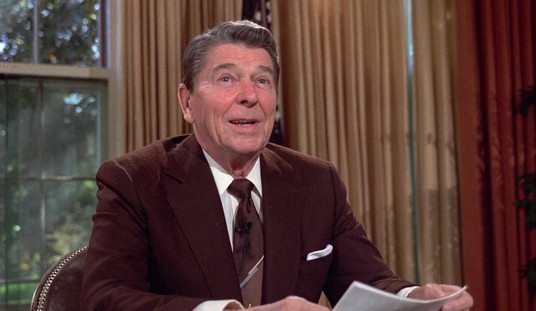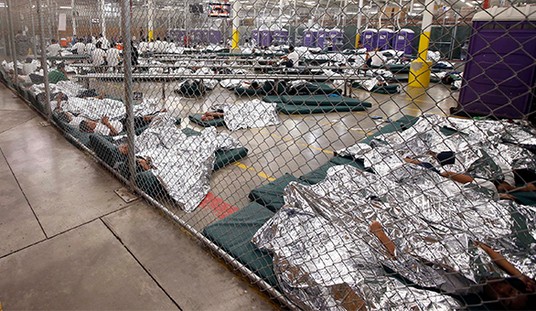How much would you pay someone not to do something? How much would you pay somebody to go away? In one of today’s Drudge links there’s a picture of President Obama touring the Boeing plant in South Carolina that he had tried to close.
President Obama rallied with union workers at a Boeing plant in Washington, but he praised the manufacturing conducted by Boeing in South Carolina, even though his National Labor Relations Board (NLRB) tried to close the South Carolina plant at the behest of the Washington union workers.
“So this company is a great example of what American manufacturing can do in a way that nobody else in the world can do it,” Obama told the assembled workers this afternoon at the Everett, Wash., Boeing plant …
The NLRB dropped the complaint in December after Boeing signed a new contract with the machinists
The Washington Examiner’s Philip Klein argued that the NLRB “helped unions shake down Boeing” by pushing the complaint, which would have cost over 1,000 non-union jobs in South Carolina, until the union received the new contract.
A paper in economics describes the difference between racketeering and government.
“Someone who produces both the danger and, at a price, the shield against it is a racketeer. Someone who provides a needed shield but has little control over the danger’s appearance qualifies as a legitimate protector, …”
In this note we discuss a third case where all violent entrepreneurs are drawn from the same pool. There is a division of labor between those who use violence and those who protect against violence and each entrepreneur chooses the activity that is most profitable.
Someone in the previous thread expressed astonishment that “public policy” should be a career. It’s not just a career, it’s a gold mine, properly approached.
One of the interesting things about the American economy, perhaps the world economy, is how it keeps trying to grow in spite of all attempts to beat it down. The Keystone pipeline and the NLRB decision are testaments, in a sad sort of way, to the vigor of the American economy. It is like rooting for the caterpillar even while it is being devoured alive by parasitic wasps. Though clearly doomed, you can’t help but but admire the critter’s spunk.
Why so many extortionists? Because it is at present more profitable to be a racketeer than to be an entrepreneur. It makes more economic sense to invent some scam like Global Warming and then wait to be paid to go away than it is to frack for oil.
Some countries overseas are in the contrary position. While there is corruption in China, it is more lucrative right now to attract an American industry there than it is to shake it down. Hence, they let it in; and the consequence is that industries are exported and outsourced to China, fundamentally in line with economic incentives.
The structural problem with the American economy is that it is all too often more lucrative to shake industry down than to run it for profit. This habit developed in the fat days. But as the parasites run down the country, the equation will shift as the more and more buzzards compete for fewer and fewer carcasses. Pretty soon it becomes profitable to make something again, but only after things have hit the bottom and people become impoverished.
What makes it cheap to run protection is the political system and its handmaidens, political correctness and humbug. Without them people who produce negative value, guys like Jesse Jackson or the Greenies, would have fewer opportunities to be “important” or “leaders”.
Right now, selling bureaucratic protection is a land office business. Therefore it attracts the underemployed members of the minor aristocracy who see in it a potential source of income. What they fail to understand is that in the long run it cuts their throats too. The solution, it would seem, is to find ways to raise the costs in the extortion business so that it once again becomes better to make something than to sniff around for a rent-seeking opportunity. It is either that or wait for Darwin to work his cruel ways and pick up from the bottom.
When it was revealed that the food police hired to protect kids from turkey sandwiches packed by mom were funded from the Stimulus, I remarked that all command societies reach the point of diminishing returns, where the cost of each additional control rises not linearly, but but exponentially. The bureaucrats, like packets in a bad network, start to collide. Soon you will need police to watch the turkey sandwich police.
The Economist has a story about regulation in America. It says, “the home of laissez-faire is being suffocated by excessive and badly written regulation”.
A Florida law requires vending-machine labels to urge the public to file a report if the label is not there. The Federal Railroad Administration insists that all trains must be painted with an “F” at the front, so you can tell which end is which. Bureaucratic busybodies in Bethesda, Maryland, have shut down children’s lemonade stands because the enterprising young moppets did not have trading licences. The list goes hilariously on.
But red tape in America is no laughing matter. The problem is not the rules that are self-evidently absurd. It is the ones that sound reasonable on their own but impose a huge burden collectively …
Consider the Dodd-Frank law of 2010. Its aim was noble: to prevent another financial crisis. Its strategy was sensible, too: improve transparency, stop banks from taking excessive risks, prevent abusive financial practices and end “too big to fail” by authorising regulators to seize any big, tottering financial firm and wind it down. This newspaper supported these goals at the time, and we still do. But Dodd-Frank is far too complex, and becoming more so. At 848 pages, it is 23 times longer than Glass-Steagall, the reform that followed the Wall Street crash of 1929. Worse, every other page demands that regulators fill in further detail. Some of these clarifications are hundreds of pages long. Just one bit, the “Volcker rule”, which aims to curb risky proprietary trading by banks, includes 383 questions that break down into 1,420 subquestions.
But it is worse than that. As the Corzine incident showed, financial reform created a thicket in which new snakes could breed. It was crafted to exploit a loophole. As Richard Levick at Forbes writes, that leaves things right back where they started.
So we’re back to Square One in the great policy debate: “we must have new laws and tougher laws” versus “we must let the marketplace self-correct and be wary of the unintended consequences of legislating correctives that don’t even correct.”
Undoubtedly the Liberals will say that the only problem with Dodd-Frank was that it was only 23 times longer than Glass-Seagall, clearly inadequate. Like the stimulus it has to be as big as a bazooka to work. Why not make it 230 times longer? Or 2,300 times longer — if that’s what it takes.
But at some point the diminishing returns kick in. Just how many hours will an attorney charge just to see if you are in basic compliance? And will it guarantee no more loopholes?
It’s a game you can’t win. And sooner or later, as night follows day, the system will complexify itself to death. There isn’t enough free energy on earth to regulate everything to the degree that statists think they should be regulated. But they’re going to try. Before the end, they are sure going to try.
How to Publish on Amazon’s Kindle for $2.99
The Three Conjectures at Amazon Kindle for $1.99
Storming the Castle at Amazon Kindle for $3.99
No Way In at Amazon Kindle $3.99, print $9.99










Join the conversation as a VIP Member